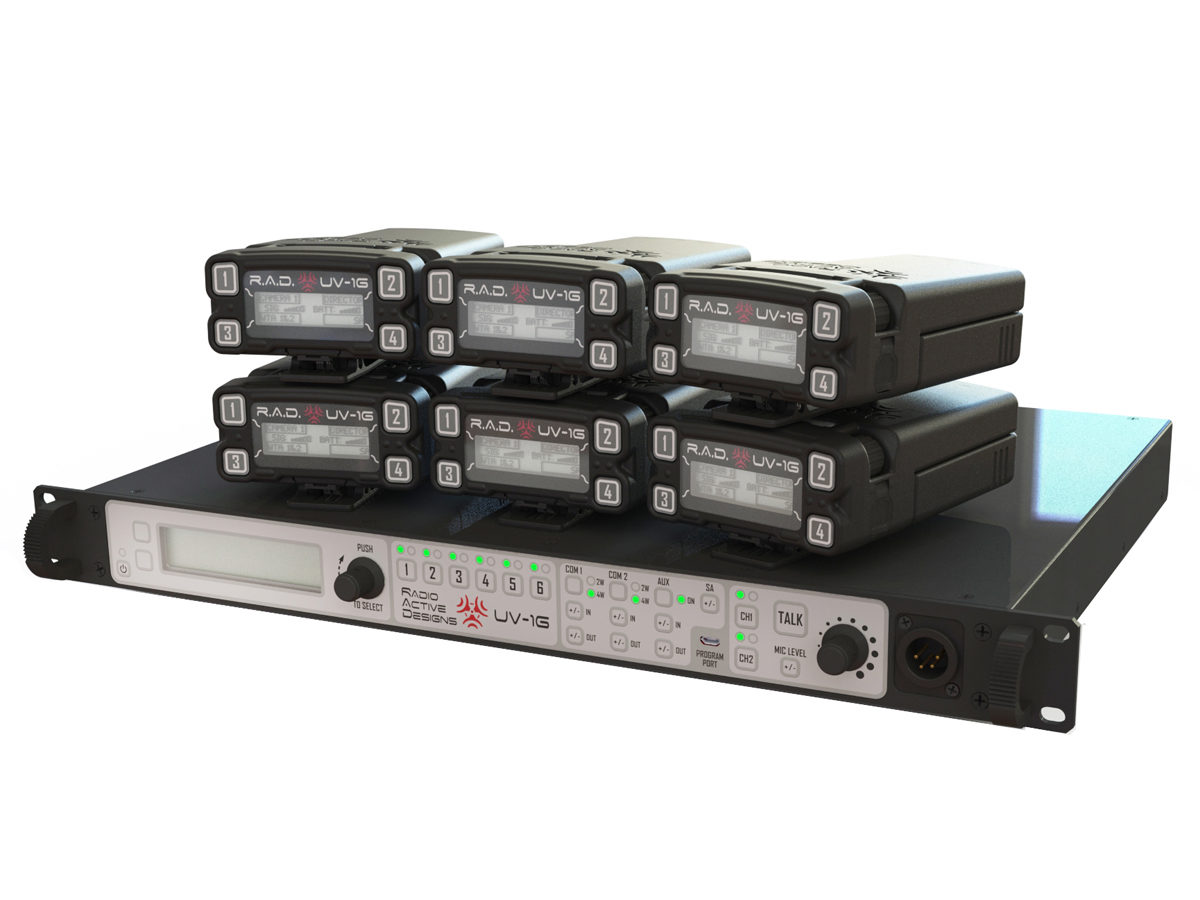UV-1G Wireless Intercom
Radio Active Designs UV-1G wireless intercom system streamlines system setup by offering RF channels with a mere 25 kHz occupied bandwidth while using the relatively unused VHF range for all belt pack portable devices. Enhanced Narrow Band technology makes the transmitter’s occupied bandwidth more predictable and 10 times more spectrally efficient than current FM technology.
With the extremely crowded state of the 1.9 GHz band, the UV-1G is more relevant than ever for production use. The industry is running out of RF spectrum for wireless. The UV-1G can provide reliable wireless communications without sacrificing valuable UHF bandwidth.

Features:
Each channel has an occupied bandwidth of 25kHz
Packs operate in the VHF Range which clears up valuable UHF spectrum for microphones and IEMs
Operate 30 base stations with up to 180 belt packs in the same UHF footprint as a 1 base station 4 beltpack system that uses traditional FM technology
UHF base to pack frequencies operate below allowed range of portable TVBDs
Up to 6 belt packs to one base station
Internal belt pack antennas
Feed hundreds of belt packs from on antenna
Audio quality of traditional FM intercom systems
Version 2 Belt Pack Features:
Headset microphone bias voltage supports any headset
Belt pack battery life increased by 25%
Temperature has decreased
Belt pack audio vastly improved
Headset output offers greater gain and more dynamic range
With the latest firmware update in the base station, the system sounds better than any analogue wireless intercom on the market at this time
